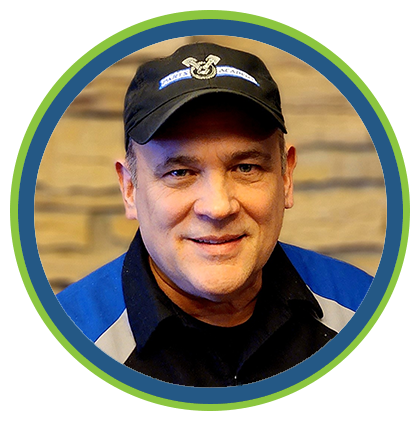Upselling is any activity that increases revenue on a given transaction. With higher margins, and a large inventory investment, your parts counter is the best place to upsell. As a parts professional, you may be a little uncomfortable when asked to sell. You may think, “If I wanted to be a salesperson, I would already be one.” The core skill you have developed is to solve problems. Everyone who comes to your counter has a problem, and they hope you can help. Solving customer problems motivates you, and you are good at it. That problem solving skill is exactly why you can be great at upselling.
Over the last 50 years, significant research has been done on the psychology of selling. It is no surprise that the results show customers are not open to a sales offer if they have an unresolved problem. Every time the study was repeated, researchers discovered customers are most open to a sales offer right after their problem is solved. Almost like a magical window of time opens and they are receptive to a sales offer. Simply put: “Solve then sell.”
You have two great opportunities to upsell at the parts counter. You have probably heard the term suggestive selling. Before we do that, we need to practice the other form of upselling: assumptive selling. At the parts counter, this happens during the problem-solving process.
For example, the customer asks for a bearing. Without upselling you would sell him the bearing and send him on his way. With the art of assumptive selling, you recommend all the items related to the bearing replacement: the seal, gasket, snap ring, locknut, sealing compound and even the oil to refill the unit. Assumptive selling is a consulting process. You should talk about why this part failed. Was it normal wear, was it hot or a lack of lubrication? There may be additional parts that would be best to replace while the unit is disassembled. Assumptive selling is a service you provide to your customers. It’s one reason customers come to your dealership instead of a competitor or buying the part online.
You are probably already doing assumptive selling without thinking about it as upselling. Now that you have solved the customer’s problem you can move to suggestive selling. Moving beyond items needed for the intended repair, you can point out other products:
- New products
- Parts specials or items on sale
- Products needed for the season or upcoming season
- Maintenance items or fluids
It does not have to be new or on sale for you to mention it. You may just identify “focus products” that everyone on the counter promotes during the month. Keep in mind you are in that magical window of time where the customer is open to a sales offer. By solving their problem, you have earned the opportunity to do suggestive selling.
Upselling not only adds revenue and margin to your dealership, but it also ensures that your customer leaves with everything they need to complete the job correctly. You are probably better at upselling than you realize. Continue to expand your assumptive selling efforts and push yourself to do more suggestive selling. You will be surprised how customers respond when you “solve then sell.





Post a comment
Report Abusive Comment